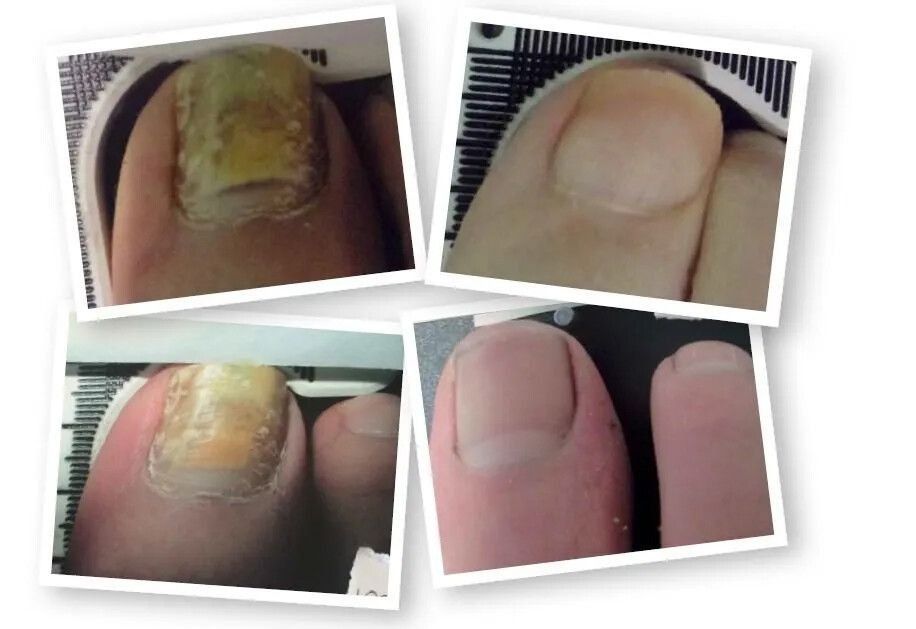Lunula Cold Laser
Healthy, clear nails made simple.
The Lunula cold laser is a pain-free, non-thermal laser that requires no anaesthetic. A successful clearance rate can be expected between 83% and 97% of patients.
What is the Lunula cold laser?
The Erchonia Lunula cold laser uses low-level laser light to target nail fungus. Lunula cold laser is safe, effective, and FDA market cleared to effectively target the appearance of unsightly and sometimes painful conditions such as fungal nail infections.
In as little as four-weekly 12 minute treatments, you can regain your jandal and barefoot freedom.
The Lunula cold laser is a superior option for treating nail fungus, providing lasting results for patients. More effective than sprays, lacquers, or oral prescription pills, Lunula cold laser is proven to significantly increase clear nail growth over a six-month period.
How does the Lunula cold laser work?
The Lunula cold laser delivers a combination of two very low power lasers simultaneously at very specific wavelengths to the surface of your feet. The lasers rotate over a large foot area to treat the infected area within the nails and nail bed. The two lasers used are:
Blue (405nm), targeting fungus and the outer wall, weakening it significantly, and allowing the body’s immune system to attack and destroy the fungus.
Red (635nm), activates the body’s natural immune cells through fortifying and generating activity that neutralises and destroys the weakened fungus. The red light can also stimulate and improve blood flow, bringing nutrients and additional immune cells to the affected area, speeding up the treatment process.
How do I get diagnosed?
Your diagnosis takes place during a consultation with our Foot Foundation clinician. They will take a thorough medical history, consider your risk factors, complete a comprehensive physical examination and use a Diafactory fungal nail test to correctly diagnose your fungal infection. Diafactory fungal nail tests involve taking a clipping of your toenail, taking photos of your infected nails and measuring the line of fungal growth from the base of the nail so we can monitor your treatment over time.
Once a correct diagnosis has been made, your Foot Foundation clinician will discuss the most appropriate treatment protocol with you and answer any questions that you may have.
What is the Lunula cold laser treatment process?
Before your laser treatment begins, your Foot Foundation clinician will trim, thin and debride your affected nails to best prepare them for laser treatment. This process removes as much of the fungal infection as possible to ensure the best success of your laser treatment.
You will receive important information about appropriate hygiene and prevention methods to reduce the rate of re-infection during and after treatment. It’s important that you follow these instructions for the best outcome.
Once we have prepared your feet, you will undertake weekly cold laser appointments for four weeks. Each treatment will last for 12-48 minutes depending on the severity of the infection.
Your Foot Foundation clinician will speak to you in more depth to determine whether a combination of treatments are required whilst undertaking Lunula cold laser treatment.
A follow-up consultation is required one month after the fourth laser treatment to determine whether healthy nail growth is present or not. At this appointment, photographs and measurements will be compared against your initial appointment to determine your progress.
If further laser treatment sessions are required, your Foot Foundation clinician will explain how many more laser treatments you will require, or whether another treatment option is advised.
How successful is the Lunula cold laser?
Clinical trial results demonstrated 89% of patients experienced 6.1mm more new clear nail growth over a 6-month period.
*As with any medical procedure 100% efficacy cannot be guaranteed, however, clinical trials conducted by Erchonia Corp. showed an improvement in 97% of nails treated with Lunula® cold laser. Nails may have been subjected to trauma resulting in some permanent damage to the area which may remain even when there is no longer a presence of Onychomycosis.

Take Action Now for Healthier, Clearer Nails!
Don't let fungal nails keep impacting your life. Seek treatment early for quicker improvement.
At Foot Foundation, we focus on clear communication and specialised care. Our custom treatment plans are aimed at restoring your nail health efficiently.
Ready for healthier nails?
Ready to start your journey to healthier nails?
Click below to book today. With Foot Foundation, you’re in expert hands—let’s tackle those fungal nails together.

